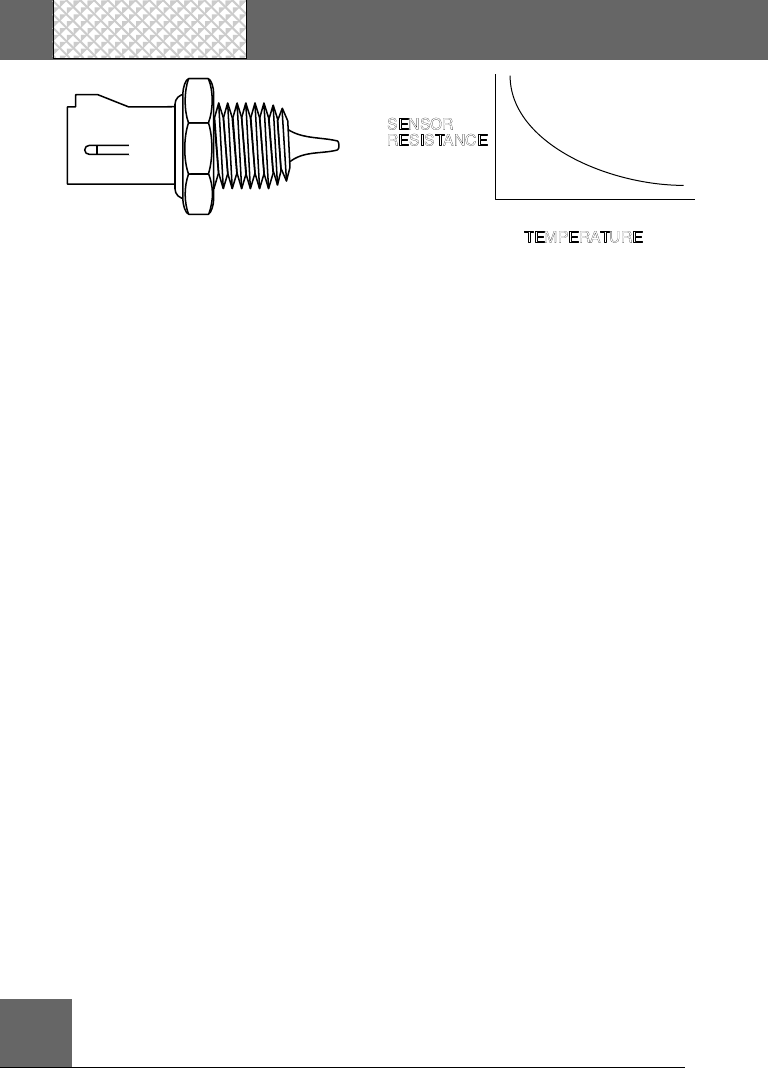
Section 2
2-2
Engine TEMPERATURE
What to
Inspect
Sensor operation (see test on page 2-4). Poor
connections at sensor or computer. Faulty sensor
wiring (open or short circuits). Heavy deposits on
sensor tip which can cause poor response.
Leakage into sensor housing. Engine running too
hot (problems with antifreeze, thermostat, water
pump, fan, belts, low engine oil).
When to Test
• Related trouble codes sent by computer.
• Driveability problems such as hard starting,
rough idle, stalling, hesitation, stumble, surging,
knocking (pinging), poor fuel economy, or black
exhaust smoke.
Location
The sensor is usually threaded into the engine
block, lower intake manifold, or cylinder head to
provide direct contact with coolant.
How is It
Used?
The computer needs to know engine temperature
so it can modify air/fuel ratios, spark advance, idle
speed, and emission device operation (such as an
EGR valve).
What is It?
The engine temperature sensor is a thermistor - a
resister whose resistance changes with tempera-
ture. The hotter the sensor gets, the lower the
resistance becomes. The thermistor is mounted
inside the tip of a threaded metal housing. This is a
2-wire sensor. (Exception: some Chrysler engines
have a dual sensor with three wires.)
HIGH
SENSOR
RESISTANCE
LOW
Cold Hot
TEMPERATURE
Typical Engine Coolant
Temperature Sensor


















